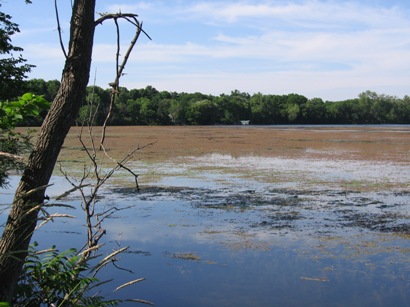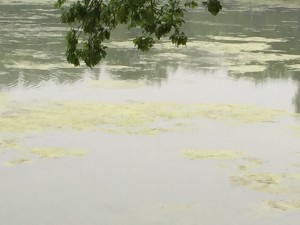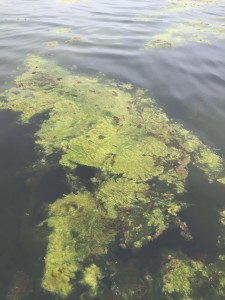Aquatic Plant Management
Aquatic Plant Management
- Invasive Species
Lake Josephine was diagnosed with an aggressive invasion of Eurasian Water Milfoil in late 2012.
Eurasian Water Milfoil (EWM), is a contamination that cannot be eradicated, and requires aggressive and ongoing treatment to control. Left unchecked, it can overtake a lake, making it unnavigable by boats and unsafe for swimming and water sports.

As an example, Lake Minnetonka has also had significant problems with EWM. It was first found in 1996 in one bay, which has nearly been choked out. It later spread to multiple parts of the lake, impacting swimming and boating. Two drownings were attributed to the weed infestation. One victim was a member of the U of M swim team, who was training in the lake. Lakeshore property owners in impacted areas saw their home values plummet 30-50%. Each spring through fall, lake residents have two harvesters operating full-time to try to remove the weeds, at a cost of $200,000.


A picture paints a thousand words. The pictures were taken May of 2015 on Lake Josephine, showing how aggressive our EWM and Filamentous Algae infestations were in their early stages.
Below are some links with more information concerning Aquatic Invasive Specifies:
MN DNR Aquatic Invasive Species Program
MN DNR Page of Minnesota Aquatic Invasive Animals
MN DNR Page of Minnesota Aquatic Invasive Animals
MN DNR Page of Minnesota Aquatic Invasive Diseases
MN DNR List of Infested Waters
MN DNR Approved Commercial Aquatic Pesticide Applicators and Mechanical Control Companies
- Rules Around Lake Treatment
DNR restricts weed treatment
Treatment area cannot exceed 15% of a lake’s littoral area (15% Rule)
Lake Josephine is 116 acres, with 81 of those considered littoral, which gives us approx. 12 acres to work with
Treatment plan has traditionally been:
o 3.2 acres of shoreline spraying, individually contracted by homeowners
o 7.9 acres of offshore spraying, contracted by association to benefit entire lake
o 1 acre must be held in reserve
If DNR agrees that a lake has an aggressive weed infestation, it can allow a variance to treat a larger area
Coverage area for variances differ, based on the type, nature & extent of the weeds
A variance must be applied for & granted before additional acreage can be treated
For Eurasian Water Milfoil, DNR waits until late Spring/early Summer so it can diagnose the prevalence and the pattern of the weed before allowing any treatment and/or granting a variance
As we have both a limited amount of chemicals we can put into the lake and $ to work with, DNR tailors the treatment plan (location & coverage) to optimize both.
- Treatment Plan
Offshore 2015 Treatment Plan
- Lake Josephine Improvement Association applied for—and was granted—a variance from DNR to treat beyond the 15% littoral limit due to our large infestation of Eurasian Water Milfoil (EWM).
- DNR allowed us to treat 24.1 offshore acres in 2015, which is roughly three times our normal allowance of 7.9 acres.
- Offshore spraying for EWM took place in late June and noticeably reduced the amount of EWM in the lake.
- Note: DNR determines the “map” of offshore areas to be treated based upon where the milfoil is the most dense and most hazardous to lake users—the Board has no jurisdiction. The treatment areas are outlined in the map on the following page.
- After consulting with DNR and our treatment vendor, we decided NOT to conduct off-shore treatment of the Filamentous Algae, as it is an infestation that tends to break up on its own. It’s often held on the surface of the lake by EWM, so the EWM treatment also had the added benefit of helping to dissipate it.
- Two rounds of onshore treatment–for those who contracted for it—occurred in mid-June and mid-July. The broad-spectrum herbicide used kills EWM as well as Curly Leaf Pondweed, Filamentous Algae, and White Stem Pondweed. Unfortunately, the White Stem Pondweed stalks may not disintegrate and may need to be physically removed by homeowners.
- A caveat of a DNR treatment permit and/or grant is that we complete a Lake Vegetation Management Plan for 2015-2016. We are working with DNR to understand what this plan entails and what the costs associated with it will be.
2015 EW Approved Treatment Areas – link to document (this is in the lake breeze newsletter on page 4 – please copy as a separate document).
- Treatment History
Weed Treatment Plan – June 16, 2014
2014 EWM Variance Treatment Plan – link to document
- Map of Approved Treatment
Agent Image – please include the map from – Lake Breeze 2015 page 4 – Lake Josephine, Ramsey County: 2015 Eurasian Watermilfoil, Approved Treatment Areas
- The Concern
We’ve been extremely fortunate in past years to enjoy a relatively clean lake, and have not had to seek contributions from homeowners to cover offshore weed treatment, but that all changed a few years ago , in late 2012, after the lake was diagnosed with Eurasian Water Milfoil (EWM).
Eurasian water milfoil is an infestation that cannot be eradicated, it can only be controlled. Just as the need to control it will be ongoing, so will our need to collect contributions to cover both offshore treatment, as well as lake testing that the DNR requires as a stipulation of that treatment.
That’s why, for the first time in Fall of 2013, the Board sought a voluntary contribution from lake homeowners to cover 2014 offshore EWM treatment. Similarly, we needed to do the same thing to cover this year’s treatment, which was more expensive given that DNR approved a variance to treat more acreage. Roughly 60% of our 72 homeowners contributed to the 2015 treatment fund, raising approximately $9,000.
Costs of 2015 offshore spraying were approximately $8,200. After receiving our $2,300 MN grant from DNR, we will be left with roughly $5,000 left in the coffers. As a condition of receiving a DNR treatment permit and variance approval, we need to conduct a 2015-2016 Lake Vegetation Management Plan, which will have additional costs associated with it. Clearly, our fundraising efforts will continue to be needed, and we hope we can rely on your continued support!
Living on Lake Josephine is a privilege. . .one that we don’t want to take for granted. THANK YOU for your continued support in conserving this beautiful resource and in protecting our property values. We look forward to your input & engagement.

